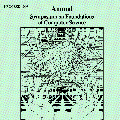In this work we investigate the computational complexity of the pure consistency of local density matrices ($\mathsf{PureCLDM}$) and pure $N$-representability ($\mathsf{Pure}$-$N$-$\mathsf{Representability}$) problems. In these problems the input is a set of reduced density matrices and the task is to determine whether there exists a global \emph{pure} state consistent with these reduced density matrices. While mixed $\mathsf{CLDM}$, i.e. where the global state can be mixed, was proven to be $\mathsf{QMA}$-complete by Broadbent and Grilo [JoC 2022], almost nothing was known about the complexity of the pure version. Before our work the best upper and lower bounds were $\mathsf{QMA}(2)$ and $\mathsf{QMA}$. Our contribution to the understanding of these problems is twofold. Firstly, we define a pure state analogue of the complexity class $\mathsf{QMA}^+$ of Aharanov and Regev [FOCS 2003], which we call $\mathsf{PureSuperQMA}$. We prove that both $\mathsf{Pure}$-$N$-$\mathsf{Representability}$ and $\mathsf{PureCLDM}$ are complete for this new class. Along the way we supplement Broadbent and Grilo by proving hardness for 2-qubit reduced density matrices and showing that mixed $N$-$\mathsf{Representability}$ is $\mathsf{QMA}$ complete. Secondly, we improve the upper bound on $\mathsf{PureCLDM}$. Using methods from algebraic geometry, we prove that $\mathsf{PureSuperQMA} \subseteq \mathsf{PSPACE}$. Our methods, and the $\mathsf{PSPACE}$ upper bound, are also valid for $\mathsf{PureCLDM}$ with exponential or even perfect precision, hence $\mathsf{precisePureCLDM}$ is not $\mathsf{preciseQMA}(2) = \mathsf{NEXP}$-complete, unless $\mathsf{PSPACE} = \mathsf{NEXP}$. We view this as evidence for a negative answer to the longstanding open question whether $\mathsf{PureCLDM}$ is $\mathsf{QMA}(2)$-complete.
翻译:暂无翻译




